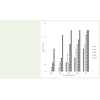Research Article
Evaluation of Maize (Zea mays) Growth on Arable Soils Proximal To Gas Flaring Site in Egbema, Imo State,Southeastern Nigeria
Nwagbara MO*, Irondi OA
Department of Soil Science and Meteorology, Michael Okpara University of Agriculture, Umudike, Abia State, Nigeria
Corresponding author: Moses O Nwagbara, Department of Soil Science and Meteorology, Michael Okpara University ofAgriculture, Umudike, Abia State, Nigeria; E-mail: monwagbara@yahoo.com
Citation: Nwagbara MO, Irondi OA. Evaluation of Maize (Zea mays) Growth on Arable Soils Proximal To Gas Flaring Site in Egbema, Imo State, Southeastern Nigeria. J Environ Soc Sci. 2016;3(1): 120.
Copyright © 2016 Nwagbara MO. This is an open access article distributed under the Creative Commons Attribution License, which permits unrestricted use, distribution, and reproduction in any medium, provided the original work is properly cited.
Journal of Environmental and Social Sciences | Volume: 3, Issue: 1
Submission: 13/04/2016; Accepted: 28/04/2016; Published: 06/05/2016
Abstract
The effects of gas flaring on arable soils and growth indices of maize (Zea mays) in Egbema were examined. A purposive transect sampling techniqueat marked distances (10m, 50m, 100m, 200m and control 40km) away from a flare site was used. Soil samples were collected from five marked distancesat 0 -15cm and 15 – 30cm depths while part of the 0 – 15cm samples was used for maize poly-bag test crop experiment. Oba Super maize hybrid wasused as planting material using RCBD replicated thrice. Results gave mean values of 0.66, 1.06, 1.46, 1.79, and 2.66 for emergence rate; 3.37cm, 4.85cm,9.97cm, 8.09cm and 13.12cm for maize height; and 1.69cm2, 2.75cm2 3.07cm2, 4.06cm2 and 11.33cm2 for leaf area at 10m, 50m, 100m, 200m and 40kmrespectively. ANOVA was employed for statistical data analysis. Maize growth parameters at 10m, 50m, 100m, and 200m showed a decrease trend of dataat closer distance to the flare, which could be as a result of increase in soil temperature and reduced soil moisture at the flare site. The control (40km away),showed increase data in all the parameters monitored. For increased growth and yield, maize plots should be sited at least 30km away from gas flaring sites.
Keywords: Gas flaring; Arable soils; Maize; Growth indices; Flare site
Introduction
Gas flaring, which is a means of safely disposing of waste gasesthrough the use of combustion [1], is a common sight in the NigerDelta Region of Nigeria. This is the crude oil and natural gas producingregion of the country. Here, gas flaring involves the use of open flare(both horizontal and vertical) to burn off unwanted associated gas thatare extracted from the earth along with the crude [2]. An open flareis a type of flare that emits direct flames, thereby increasing thermalradiation to the surrounding community. The flares associated withgas flaring give rise to atmospheric contaminants which return to theearth as dry deposits or via acid rain. These contaminants include oxides of Nitrogen, Carbon and Sulphur (NO2, CO2, CO, SO2),particulate matter, hydrocarbons and ash, photochemical oxidants,and hydrogen sulphide (H2S) [3-5]. Acid rain is formed when sulphurdioxide (SO2) and nitrogen dioxide (NO2) combine with atmosphericmoisture to form sulphuric oxide and nitric oxide respectively. Thecontaminants and acid rain acidify the soil, hence depleting soilnutrient. It has been found out that the nutritional values of cropswhich are proximal to gas flaring sites are reduced [6]. In some cases,there is no vegetation in the areas surrounding the flare due partly tothe tremendous heat that is produced and acidic nature of the soil [7]. Also, gas flaring has been confirmed to have raised the average globaltemperature by about 0.5 °C in the last century [8,9]. Acid deposition and intense heat from gas flares are known to have deleterious effectson the fertility and productivity of the surrounding soils at gas flaresites. The obvious signs of these can be noticed in the poor vegetationgrowth and scorched soils around the sites. There could be about100% loss in yield of crops cultivated 200m away from the flares, 40%loss in yield of crops at 600m away and 10% loss in yield for cropsplanted 1000m away [10].
Population growth in developing countries is driving a rapidincrease in the demand for food and fibre. At the same time, risingpopulation density in rural areas and increased demand on landswith arable soils for industrial activities have diminished farm size.Arable land is land under temporary crops cultivation, or land underpermanent crops and is replanted after each harvest [11].
Maize (Zea mays L.) belongs to the Family Poaceae and isutilized worldwide for both industrial and food purposes. It is alsoa very important food grain for humans and animals [12]. Abouthalf of global maize production is grown in developing countries,where maize flour is a stable food for poor people and maizestalks provide dry season feed for farm animals [13]. In industrialcountries, maize is largely used as livestock feeds and raw materialsfor industrial products. In sub-Saharan Africa, maize is a staple foodfor an estimated 50% of the population and provides 50% of the basiccalories [13]. It is an important source of carbohydrate, protein, iron,vitamin B and minerals. Maize is the third most important cerealcrop following wheat and rice in the world production of cereals[14]. Also, it is one of the major staples consumed in Nigeria [15].It has a lot of industrial uses including its use as feed for domesticanimals. In Nigeria, it is grown in most ecological areas especially inthe Niger Delta region where oil exploration and industrial activitiesare predominant [16-19].
From the foregoing, gas flaring adversely affects the environment.Equally, maize is an important crop of the people of the Niger DeltaRegion of Nigeria. However, there is paucity of information on theeffects of gas flaring on growth rate and yield attributes of maizeplanted proximal to gas flaring site in Egbema, a community in theNiger Delta Region of Nigeria. This study therefore aims at evaluatingthe growth performance of maize in arable soils proximal to a gasflaring site in Egbema, Imo state, Southeastern Nigeria.
Materials and Methods
Study Area
Soil samples were collected from the vicinity of Assa-Egbemahorizontal flare jet and Awara-Egbema (control) much outside theflare jet (40km away), both in Egbema Community of Imo StateSoutheastern Nigeria which lies between latitudes 5 °14’N and 5 °35’Nand longitudes 6 °25’E and 7 °6’E. The area has an annual rainfall totalwhich ranges from 2250 mm and the annual mean temperature isabout 27.0 °C Soil types are ultisol (USDA Soil Classification) derivedfrom coastal plain sand [20]. The geological material is coastal plainsands (Benin formation). The area is generally low-lying with analtitude of 50 m above sea level. It is of Rainforest vegetation andHumid Tropical climate. The area is not rich in nutrient due to highrainfall that promotes leaching of basic ions away from the reachof plants into deeper horizons. The land is a rich source of mineral deposits such as crude oil and natural gas, which makes part ofthe area a gas flaring zone. Agriculture constitutes a major socioeconomicactivity in the area with the continuous planting of cassava(Manihot esculenta) and maize (Zea mays) as well as oil palm (Elaeisguinaensis). Also, many youths are engaged as workers, though mostlycasuals, with multinational oil companies in the host community.
Sample Collection and Preparation
A transect sample technique was employed in sample collection.Soil samples were collected from different location points marked asA, B, C, D within the horizontal flare jet and point E (control) muchoutside the flare vicinity at distances of 10m, 50m, 100m, 200m and40km respectively away from the bound wall of the flare jet. Thismeans ten (10) representative sample spots. The control, which isabout 4km away from the flare site, was chosen because [21] notedthat the impact of gas flaring on soil and atmospheric quality isstatistically insignificant beyond 15km and 20km radius of the flaresite. Samples were collected from 0-15cm topsoil and 15- 30cmsubsoil depths. The samples were bagged in a polythene bags andlabelled appropriately against each spot of collection. Samples wereair-dried for five days at room temperature and later sieved using2mm mesh prior to laboratory analysis. Part of the 0 -15cm sampleswas used for planting maize (Zea mays) pot experiment. This depthwas chosen because that is the main root zone of maize crops [22].
Laboratory Analysis
The prepared samples from 0-15cm topsoil and 15- 30cm subsoildepths were analyzed for selected physico-chemical properties of thesoil. They were analyzed using notable standard procedures as foundin [23] as follows:
Soil temperature was determined by immersing the bulb ofmercury-in-glass thermometer into the marked distances (i.e. 10m,50m, 100m, 200m and 40km) and depths (0-15cm and 15-30cm) insitufor three minutes each and readings (in °C) taking appropriately.Particle size analysis was determined using Bouyoucous hydrometermethod according to the procedure of [24] where sodiumhexametaphosphate (calgon) solution was used as a dispersing agent.Bulk Density estimated using determined in undisturbed cone by themethod described by [25] and was calculated thus:


Where:


Vt=Tatal soil volume (cm3) assumed to be equal to volume of cylinder cal.from

Total porosity was calculated from the result of bulk density and particle density as follows:

Where

The moisture content was determined by gravimetric method as

Where

The soil pH was determined in a suspension of soil/water of1:25 and was measured using a glass electrode pH meter as wasdescribed by [26]. Organic carbon was determined by the methodof wet oxidation according to [27]. Organic matter was determinedby multiplying organic carbon with Van Bemmelen factor of 1.724.Available Phosphorus was determined using Bray II extractionmethod. Total nitrogen was determined using the modified micro-Kjedahl digestion method [28]. The exchangeable bases weredetermined from ammonium acetate (NH4OAc) leachate of the soil[29]. Exchangeable calcium and magnesium were determined by theEDTA (Ethylene Di Amine Tetra-acetic Acid) versanate titrationmethod. Exchangeable sodium and potassium were determined by the flame photometer method [30]. Exchangeable acidity (Al3+ +H+) were determined by leaching the soil with 1NKCl and titratingwith 0.05NaOH [26]. Exchangeable Cation Exchange Capacity wasdetermined by the summation of the total exchangeable bases (TEB)and total exchangeable acidity (TEA). It is expressed in meq/100gsoil. Percentage Base Saturation was calculated thus:

Where

Data Presentation and Analysis
Data collected were analyzed and presented in tables and charts.Analysis of variance (ANOVA) was employed in data analysisand means for statistical significance were separated using leastsignificance difference at 5% probability level according to [30,31].
Results and Discussion
Results of the physical and chemical laboratory analyses of thesoil samples are shown in Tables 1 and 2. In Table 1, sand content(94.24%) increased towards the flare, which may be due to loworganic matter content of soils close to the flare site and/or due to thenature of Southeastern Nigerian soils [32]. The observed decreasedvalues of silt (3.64%) and clay content (2.12%) in Table 1 closer theflare could be as a result of acidic by-products of gas flaring like soot,dry deposition and acid rain.
The observed decrease in soil temperatures (56 °C, 43.5 °C, 41 °C and 34 °C) at 10m, 50m, 100m, and 200m respectively, away fromthe flare (Table 1) could be due to the burning of crude oil productsvia gas flaring. This activity might have increased the temperature ofthe surrounding soils. The increased mean bulk densities closer theflare (1.37g/cm3, 1.34g/cm3, 1.32g/cm3, 1.29g/cm3) for 10m, 50m,100m and 200m respectively as shown in Table 1, could be attributedto heat radiated from the flare, thus resulting to soil compaction,and decreased organic matter content of the soils in the flare site.This agrees with the findings of [33], which states that bulk densitydecreases with increase in organic matter of the soil. Also, the decreasein moisture content, 2.85%, 5.00%, 5.50%, and 5.68% for 10m, 50m,100m, and 200m respectively, closer the flare site could be due toheat radiated by the flare. This observation is in line with the studiesof [34], which showed that the heat generated by the flare increasedevaporation rate in soils closer to the flare sites. Hence, the decreasein soil moisture content close to the flare whereas the control (6.42%)increased (Table 1). Porosity also decreased with distance towards theflare site: 48.29%, 49.62%, 50.18% and 51.94% for 10m, 50m, 100m, and 200m respectively. This is attributable to the high bulk densityand decreased organic matter content closer the flare site as whencompared with that of the control (54.53%).
Table 2 shows that the low pH values of 4.84, 4.95, 5.71, and5.79 at 10m, 50m 100m and 200m respectively, away from the flaresite could be due to acidic products of gas flaring deposited on thesoil via acid rain. This observation is in line with the studies of [1],which found out that gas flaring releases acidifying substances suchas soot particles and H2S which cause a decrease in soil pH giving riseto increased soil acidity whereas the control, 40km away has a pHvalue of 6.25. The observed lower values of organic carbon (0.42%)and organic matter (0.82) at 10 m away from the flare site could beattributed to the excessive heat that either kills or scares away most ofthe micro and macro organisms that help to improve the soil fertilityand soil processes through breaking down of the soil particles,decaying and decomposition of organic matter. This observation isin line with studies of [33] and [34], which concluded that gas flaring disturb the processes of eluviation and hydrolysis in soils close to theflare site, which would have enhanced the formation of insoluble clayminerals. As the organic carbon increases away from the flare site, soalso is the value of the organic matter. Also, decreased soil organicmatter content nearer the flare site could be attributed to increasedtemperatures which increased rate of decomposition [35].
Maize Poly-Bag Experiment
From Table 3 and Figure 1, maize seeds sown with soils 10m, 50m,100m, 200m from flare site emerged 3 -7 days after planting (DAP)while the control (40km away from flare site) emerged 3 - 5 days afterplanting (DAP) with mean values 0.66, 1.06, 1.46, 1.76, 2.66. Maizeemergence was lowest in the hot, dry and most impoverished 10m distance away from the flare site. This is followed sequentially by 50m,100m, 200m, and 40km (control). At 5% (P< 0.05) the difference inmeans are not significant from 2 - 8 weeks after planting (WAP).
Plant height was lowest in 10 m away from the flare site followedby 50 m, 100 m, and 200 m, and was highest in 40 km with meanvalues of 3.37 cm, 4.85 cm, 6.97 cm, 8.09 cm, 13.12 cm for 10 m, 50m, 100 m, 200 m, and 40 km respectively (Table 4). At 5% (p< 0.05)the difference in means for 2-8 WAP is statistically significant. Thisshows that these variables are not the same at different distancesaway from the flare site, confirming that gas flaring influence on thisparameter was significant.
From Table 5, maize leaf area was lowest in 10m distance fromthe flare, followed sequentially by 50m, 100m, 200m and 40km withmean values 1.69cm3, 2.75cm3, 3.07cm3, 4.66cm3, and 11.33cm3respectively. At 5% (p< 0.05) the difference in means for 2-6 WAP wasstatistically significant while the 8 WAP was not. The 10m distanceaway data recorded the least emergence rate, plant height and leafarea with mean values of 0.66, 3.37cm, and 1.69cm2 respectively,while the data for the 40km (control) distance away were relativelyvery high with mean values of 2.66 for emergence rate, 13.12cm forplant height, and 11.33cm2 for leaf area. This implies that both thegrowth rate (Plant height) and leaf area accumulation are significantlyaffected by gas flaring. This is in agreement with the observations of[36], [37] and [38]. They said that gas flaring reduces the growth andyield of maize near a flare site. Growth reduction in the seeds of maizeplanted with soils nearer the flaring site as observed in this study,could be attributed to one or a combination of the following factors:disruption of plant-water relation, toxicity of living cells, reducedoxygen exchange between the atmosphere and the soil thus affectingroot functioning, nutrient immobilization, heavy metal build up, andalteration in the physical, chemical and biological properties of soils.These factors could have led to reduction in biomass, morphologicalaberrations and other observed field abnormalities including dieback,leaf chlorosis, leaf fall/drop, necrotic patches, bleaching as well aswithering. This agreed with earlier reports of [16].
Conclusion
Growth parameters of soils at closer proximity to the flare siteshowed poor physical features when compared with the 40km(control). Poor nutrient status of the soil, high bulk density and lowmoisture content induced by gas flaring were some of the factors thatmay have inhibited not only the emergence of maize but also thegrowth in soils closer to the flare. The results of maize emergence rate,height and leaf area and correlation with selected soil properties at10m, 50m, 100m, 200m and 40km respectively correlated positively.Equally, the maize planted with the 10m soil sample away fromflare showed lowest mean values in the features monitored whilethose planted with the 40km (control) soil sample away from flareshowed highest mean values in all the features monitored. The studyhas therefore shown that gas flaring around arable soils has a highlysignificant effect on the performance of maize plant in the study area.This is evidenced in the reduction of the viability and subsequent pooremergence and overall yield of maize, the effect being proportional tothe distance of arable soils proximal to the flare site. It could therefore be concluded that maize production is not economically viable and profitable at close proximity to gas flaring site.
Concerning the age value, nostalgia enhances the perception ofall possible uses, disclosing a desire of transition from “monumental”to “functional”, particularly to “multifunctional”. Such an intensivere-vitalization of the bridge is also in accordance with the desire formaking it famous and “eternal”. Regarding the bridge as a subject ofresearch may also be understood as a reaction against proceedingdamage and for eternity. Maintenance is perceived as a prerequisitefor carrying out research.
As for the aesthetic value, remembrances of romantic past,uniqueness, beauty and feeling of strength are related with several dimensions of use value providing a) opportunity of escapingeveryday monotony and b) a multifaceted subject of research.Safety feeling appears to be only of practical and not of emotionalimportance. Emotional stimulus seems to be induced to the touristsand researchers by the feeling of strength (eternity, immortality)characterizing “primitive” building materials and methods.
Synergy appears among all four monumental values, butmostly among historical, aesthetic and use value. Thus, “knowing”,“feeling” and “using” seem to be induced by each other. The multiplemonumental values characterizing the traditional bridges constitutethem functional and of social, economic and entrepreneurialimportance for the mountainous regions. Even today, traditionalbridges can be used for the transport of people and commoditiesas well as for reaching areas which would be inaccessible throughthe normal forest road network. Enabling such accessibility is ofmultisided relevance for forest policy implementation (e.g. forest fireprevention or even fighting, improvement of habitats and silviculturalor other forestry actions, students and forest employees education),environmental education of pupils, architectural training, culturaland tourist promotion of a mountainous area through postcards,paintings, documentary films or other products of iconographic,historical and ethnographic interest or continuing folklore activities,and rural development by attracting tourists or transportingagricultural and forest products.
The maintenance, promotion and organized usage of traditionalbridges by the state and/or the regional authorities (prefecturesand municipalities) can be regarded as a rational option for thedevelopment of mountainous regions. The use of traditional bridgescan be enhanced by and integrated in various programs concerningcultural activities, tourism, building and monument restoration, ruralor even agricultural development.
A point of future improvement is to test the same indicatorsof monumental values of bridges on a larger sample of visitors.Formulating a typology of monumental features leading to certainprofiles (types) of monumental bridges is also a challenge for futureresearch. A comparison between perceptional data of monumentalbridges and of other kinds of monumental entities such as buildings,landscapes etc constitutes also an interesting question for futureresearch.
References
- Evoh C (2002) Gas flares, Oil Companies and Politics in Nigeria.
- ENS-newswire (2005) Nigerian judge rules Gas flaring violates Constitutional Rights.
- Gabriel AOI (2004) Women in the Niger Delta Region. Third Millennium.
- Obioh IB (1999) Environmental Impact Assessment of Emissions from Major Facilities at QIT, Atmospheric Emissions and Dispersion Modeling. Faithlink Consults Nigeria Ltd., PortHarcourt.
- Kindzierski WD (2000) Importance of human environmental exposure to hazardous air pollutants from gas flares. Environmental Reviews 8: 41-62.
- Imevbore AA, Adeyemi SA (1981) Environmental monitoring in relation to pollution and control of oil pollution. Seminar on the petroleum industry and the Nigerian environment 6: 135-142.
- Ubani EC, Onyejekwe IM (2013) Environmental impact analysis of gas flaring in the Niger delta region of Nigeria. American J of Scientific and Industrial Research 4: 246-252.
- Thomas FG, Allen IA (1999) Evaluation of ground of level concentration of pollutants due to gas flaring: A case study of Niger-Delta Area of Nigeria. J Ecosystem 10: 69-75.
- Penner JE (1999) Aviation and global atmosphere, Inter governmental parley on climate change, Cambridge University Press, Cambridge, UK.
- Oyekunle LO (1999) Effects of gas flaring in Niger - Delta area, Nigeria Society of Chemical Engineer Proceedings of 29th Annual Conference, Port - Harcourt, Nigeria.
- FAO (2005) World Programme for the Census of Agriculture 2010. In: FAO Statistical Development Series (FAO), no. 11 / FAO, Rome (Italy). Statistics Div., 160 pp.
- Udoh DJ, Ndon BA, Asuquo PE, Ndaeyo NU (2005) Crop Production Techniques for the Tropics. Nigeria Concept Publications Limited.
- James TK, Rahman A, Mellsop J (2000) Weed competition in maize crop under different timings for post-emergence weed control. New Zealand Plant.
- FAO (2000) FAOSTAT Website.
- Obi CJ (2001) Statistical methods of detecting differences between treatment means. SNAPP Press (Nig) Ltd. Enugu, P.8-14.
- Agbogidi OM, Nweke FU (2005a) Effects of crude oil polluted soil on the performance of okra (Abelmoschusesculentus L.). Moench in Delta State Afri J Nat Sci 8: 31- 35.
- Agbogidi OM, Nweke FU, Eshegbeyi OF (2005b) Effect of soil pollution by crude oil on seedling growth of Leucaenaleucocephala (Lam. De Witt). Global J Agri Sci 4.
- Agbogidi OM, Eructor PG, Akparobi SO (2006) Effects of Soil Contaminated with Crude Oil on the Germination of Maize (Zea mays L.) as affected by crude oil contaminated soil. Am J Plant Physiol 1: 193-198.
- Agbogidi OM, Eructor PG, Akparobi SO, Nnaji GU (2007) Evaluation of crude oil contaminated soil on the mineral nutrient elements of Maize (Zea mays). J Agron 6: 188-193.
- Enwezor WO, Ohiri A, Opowaribo EE, Udo EJ (1990) A review of soil fertilizer use in crops in southeastern zone of Nigeria (in five volumes). Produced by the Fed. Min. of Agric. And Nat. Res. Lagos.
- Odjugo POA (2007) Some Effects of Gas Flaring on the Microclimate of Yam and Cassava Production in Erihorike and Environs. Delta State Nigeria. Nigerian Geographical J. 5: 43- 54.
- Jang HD (2002) Environment and crops. In: Uwehi, Z.S. (ed): Principles of Environmental Management, Pp. 106- 300. Ibadan: ONAKS Press.
- Isodje OA (2003) Agricultural Systems, Pp. 146 – 166. Lagos: Benbon Books.
- Gee GW, Bauder JW (1986) Particle Size Analysis. In methods of soil analysis. Part 1. Klute, A (Ed). Am. Soc. Of Agron. Madison, WL, Pp 91- 100.
- Blake GR, Hartage KH (1986) In Klute. A.ed: Methods of soil analysis part and physical and mineralogical methods, 2nd edition. Madison. W.I ASA and SSSA 363-375. Agron. Monogram 9.
- Hendershot WH, Lalande H, Duquetle M (1993) Soil reaction and exchangeable acidity. In Carter, M.R. (Ed). Soil sampling and methods of soil analysis. Canadian Soc Of Soil Sci Pp. 141-145.
- Nelson DW, Sommers (1982) Total carbon, organic carbon and organic matter. Pp. 539 – 579. In Page A.L et al (eds): Methods of soil Analysis. Part 2 Second edition. Am Soc Of Agron. And Soil Sci. Am. Madison W.I/.
- Bremmer JM, Mulvaney CS (1982) Soil Total Nitrogen. In Methods of Soil Analysis. Part 2, page et al (2nd ed.). Agron. Mono. 9. ASSA and SSA. WL. Pp 595- 624.
- Thomas, G.W (1982) Exchangeable cations. Pp.159 – 165. In page (eds); Methods of soil analysis. Part 2 2nd ed. Part 2 second edition. Am. Soc. Of Agron. And Soil Sci. Ame. Madison W.I.
- Jackson ML (1962) Soil Chemical Analysis. Prentice Hall Inc. Eaglewood Cliffs, New Jersey, USA. Pp. 498.
- Obi CJ (2001) Statistical methods of detecting differences between treatment means. SNAPP Press (Nig) Ltd. Enugu, P.8-14.
- Eshett ET (1991) General properties of Iron and Aluminium status of selected rubber growing soils of Southern Nigeria. Indian J Nat Rubber Res 4: 8 - 15.
- Alakpodia IJ (2000) Soil characteristics under gas flaring in the Niger Delta, Southern Nigeria. Geo-Studies Forum 1: 1-10.
- Odjugo POA (2007) Some Effects of Gas Flaring on the Microclimate of Yam and Cassava Production in Erihorike and Environs. Delta State Nigeria. Nigerian Geographical J 5: 43-54.
- Akpobome CA (2004) Oil spillage and gas flaring and environmental degradation in the Niger Delta, Nigeria. J Environmental Analysis 2: 18-26.Ibadan, Nigeria.
- IRIN (2004) Nigeria: Focus on the environmental impacts of gas flaring, A.U.N humanitarian magazine, issue No. 2, Pp. 1-3.
- Udo, Inyang GU (2005) The effects of gas flaring on sweet potato production in the Niger Delta. Nigeria J Ecosystem 10: 77-86.
- Akpabio ZKA (2006) The impact of gas flaring on microenvironment and yield of plantain in Rivers State, Nigeria. Environmental Perspectives 10: 1-11.





